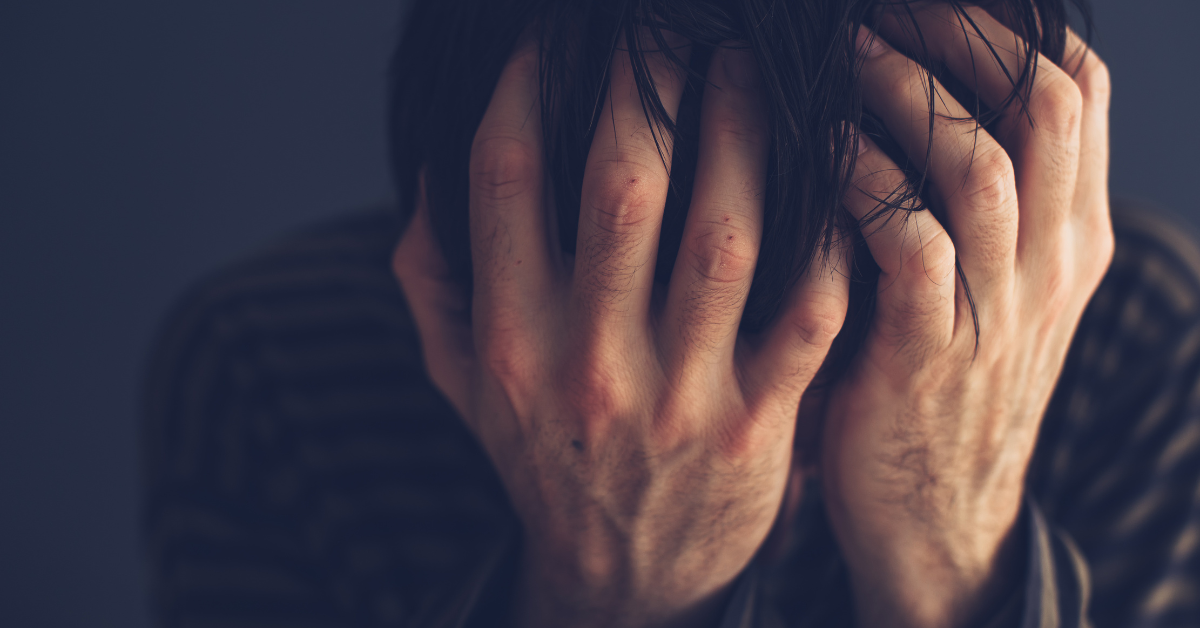Drug withdrawal presents a real challenge that leaves many people unsure about their next steps and symptom management. You might be thinking about recovery for yourself or someone close to you. A vital first step toward healing starts with understanding withdrawal symptoms.
The substance type, usage history, and personal characteristics affect withdrawal symptoms a lot. These symptoms range from mild to severe and include both physical discomfort and emotional hurdles. Medical support and proper knowledge will help you direct this challenging phase more safely and comfortably.
This detailed guide will show you everything about drug withdrawal. You’ll discover early warning signs, timeline expectations, and symptoms linked to different substances. Milton Recovery Center will also explain how to build a strong support system that helps ensure your recovery succeeds.
Understanding the Early Warning Signs of Drug Withdrawal
Your safety and recovery success depends on spotting drug withdrawal warning signs early. Your brain and body have gotten used to having substances present, and changes start happening when you stop using them.
Physical Drug Withdrawal Indicators to Watch for
Physical symptoms are usually the first signs of withdrawal. These symptoms can be present in drug withdrawal from many different substances. You may experience:
- Trembling and muscle aches
- Excessive sweating and chills
- Nausea and stomach discomfort
- Heart rate changes
- Sleep disturbances
- Headaches and dizziness
Behavioral and Mood Changes
Your emotional state changes a lot as your brain chemistry adjusts. Mood swings range from anxiety to irritability during withdrawal. Knowing how to think clearly becomes harder for a while, and sudden emotional changes might overwhelm you. These types of mood changes naturally happen as your body heals, though they can be tough to handle.
Risk Assessment Factors for Drug Withdrawal
Many things affect how severe your withdrawal symptoms become. The duration of substance use is vital – you’ll likely face stronger withdrawal symptoms if you’ve used substances longer. Your genetic makeup and overall health condition affect how your body handles withdrawal by a lot.
Important drug withdrawal risk factors to think about include:
- The specific substance(s) used
- The method of consumption
- Whether multiple substances were used together
- Your general physical health
- Previous withdrawal experiences
Knowing these early warning signs helps you get ready for what’s coming and lets you get medical support when you need it. Drug withdrawal symptoms can differ a lot from person to person, and your experience might not match others. If you are experiencing signs of drug withdrawal, reach out for help immediately. You will most likely require medical detox and subsequent drug addiction treatment.
Timeline of Drug Withdrawal Progression
The drug withdrawal timeline helps you prepare for each phase of your recovery experience. Each person’s path to recovery is different, but you can expect to follow a general timeline.
The First 24-48 Hours of Withdrawal
Your drug withdrawal experience begins in the first two days. This significant period brings the first signs within 6-24 hours after your last use. Your body starts adjusting to the substance’s absence, which triggers the first symptoms. Short-acting substances like heroin or fentanyl cause symptoms to appear faster (8-24 hours). Longer-acting substances might take up to 48 hours to show effects.
Peak Drug Withdrawal Period
The peak phase becomes the most challenging part of your drug withdrawal experience. You can expect the worst of symptoms during this period:
- 36-72 hours after stopping alcohol
- 3-4 days for short-acting opioids
- 4-6 days for longer-acting substances
- 2 weeks for benzodiazepines
Your symptoms reach their maximum intensity during this time. This phase may feel uncomfortable, but it’s temporary and shows your body’s healing process. Medical supervision becomes vital during this period to ensure your safety and comfort.
Long-Term Recovery Phase
The acute phase leads to what medical professionals call post-acute withdrawal syndrome (PAWS). Your brain needs six months to two years to fine-tune its natural chemical balance. You might experience periodic waves of symptoms that fluctuate, often triggered by stress or environmental cues.
The long-term recovery phase features more psychological and emotional aspects than physical ones. These symptoms, though less intense than the acute phase, need ongoing support and understanding. Your brain undergoes a natural healing process, and each day brings progress toward complete recovery.
This timeline serves as a general guide. Your personal experience might vary based on the substance type, usage duration, and your health conditions. Professional medical support helps you traverse each phase safely and effectively.
Common Drug Withdrawal Symptoms by Drug
Substances create unique effects on your body during withdrawal. A clear understanding of these specific patterns helps you prepare better for your recovery experience.
Opioid Withdrawal Patterns
Your body goes through various flu-like symptoms after stopping opioids. The symptoms usually start 8-24 hours after the last dose. Physical discomfort, muscle aches, nausea, and sweating become common experiences. Opioid withdrawal creates intense discomfort but rarely threatens life. Key symptoms include:
- Watery eyes and runny nose
- Muscle cramps and body aches
- Nausea, vomiting, and diarrhea
- Hot and cold flushes
- Increased heart rate and blood pressure
Alcohol and Benzodiazepine Withdrawal Symptoms
Benzodiazepine or alcohol withdrawal needs special attention due to its life-threatening potential. Alcohol withdrawal symptoms typically emerge 6-24 hours after your last drink. Benzodiazepine withdrawal starts 1-2 days after stopping. Medical supervision plays a vital role during this period, so seek immediate medical help if severe symptoms appear.
Symptoms can range from mild anxiety to severe complications. Blood pressure increases, heart palpitations and excessive sweating become noticeable. Severe cases might lead to seizures or delirium tremens, requiring emergency medical care.
Stimulant Withdrawal Patterns
Stimulant withdrawal affects your mood and energy levels differently than other substances. A “crash period” occurs within 24 hours of stopping stimulant use. Depression and anxiety become common during this phase. Though physically safer than other types of withdrawal, the psychological effects can be intense. Acute symptoms peak within the first week, but some effects might last several weeks.
Note that withdrawal symptoms signal your body’s healing process, though challenging. Professional medical support helps manage these symptoms safely and effectively.
Creating a Support System for Healing During Drug Withdrawal
A strong support system helps you manage drug withdrawal symptoms and stay in recovery long-term. The right people and resources by your side make this experience much easier to handle.
Building a Medical Care Team
Your medical care team forms the backbone of your recovery. Professional supervision like that offered in drug addiction treatment centers plays a vital role during withdrawal because experts can track your symptoms and adjust treatment when needed. Your healthcare provider can help you build a team that might include:
- Primary care physician
- Addiction specialist
- Mental health professional
- Nurses and support staff
These professionals will create a customized treatment plan that tackles both physical withdrawal symptoms and emotional needs. They’ll coordinate your care between specialists to give you detailed support.
Family and Friend Involvement
Your loved ones’ support can transform your recovery into a soaring win. Studies show that people with strong family support are more likely to maintain sobriety and finish their treatment programs. Your family and friends can help by:
- Attending family therapy sessions
- Learning about withdrawal and recovery
- Providing emotional support without enabling
- Creating a substance-free environment
- Participating in your treatment planning
Support Group Resources
Support groups are a great way to get peer connections and understanding during your recovery. These groups give you a safe space to share experiences and learn from others who face similar challenges. Several effective options exist:
- Narcotics Anonymous (NA) – Available everywhere with structured support
- SMART Recovery – Uses self-empowerment and science-based approaches
- LifeRing Secular Recovery – Gives non-religious support alternatives
- Dual Recovery Anonymous – Helps people manage both addiction and mental health challenges
Different support groups use various philosophies and approaches. You can try several until you find one that aligns with your needs and recovery goals. Many groups hold in-person and online meetings so you can stay involved throughout your recovery.
Drug Withdrawal Treatment at Milton Recovery
Drug withdrawal can be a challenging process, but understanding its symptoms and progression can make the journey less daunting. Every recovery path is unique, shaped by individual factors that influence how the body responds to withdrawal. While the symptoms may feel overwhelming, they are a natural step toward healing and regaining a substance-free life.
Professional medical care is essential during this critical time, especially during the most intense phases of withdrawal. At Milton Recovery Centers, we provide expert, compassionate care tailored to your needs. Combining our professional support with encouragement from family and peers can significantly improve your recovery journey, helping you overcome physical discomfort and emotional challenges.
Remember, withdrawal is temporary. Each day brings you closer to a healthier, substance-free future. Don’t face this journey alone—reach out to Milton Recovery Centers today to begin your personalized path to healing. Contact us now to learn how we can help you achieve lasting recovery.




